Home> Company News> Enhancing Conveyor Systems with Ball Bearing Take-Up Units
- AddressTianqiao, Beiyuan District, Jinan,Shandong
- Worktime9:00-18:00(Beijing time)
- Phone(Working Time)0531-8299 9953
1 Introduction
Conveyor systems play a pivotal role in numerous industries, facilitating the seamless movement of goods and materials. We delve into the world of conveyor systems, specifically focusing on an integral component that significantly contributes to their efficiency and reliability: Ball Bearing Take-Up Units. These units serve as the backbone of conveyor systems, ensuring proper tensioning of conveyor belts and minimizing downtime due to maintenance.
Conveyor systems are the backbone of various industries, from manufacturing and logistics to agriculture and mining. They serve as the arteries that keep materials flowing smoothly, contributing to the overall efficiency and productivity of these sectors. At the heart of every conveyor system lies an essential component, often taken for granted but pivotal for its seamless operation: Ball Bearing Take-Up Units. In this article, we will embark on a journey to explore the significance and impact of these units in enhancing conveyor systems across diverse industries.

2 Benefits of Ball Bearing Take-Up Units
Ball bearing take-up units are indispensable components in conveyor systems, offering a myriad of advantages that significantly enhance their performance and reliability.
|
Efficient Tensioning |
One of the primary advantages of ball bearing take-up units is their ability to maintain proper tension in conveyor belts. These units can be adjusted easily to accommodate changes in belt length, ensuring that belts remain taut and prevent sagging. This efficient tensioning minimizes the risk of belt slippage and reduces wear and tear, consequently extending the lifespan of conveyor belts. |
|
Reduced Maintenance |
Conveyor systems are known to require regular maintenance to keep them operational. Ball bearing take-up units significantly reduce the need for maintenance by stabilizing the conveyor belts. With less downtime and fewer maintenance intervals, industries can achieve higher productivity levels and cost savings. |
|
Improved Conveyor Reliability |
The reliability of a conveyor system is paramount in industries where continuous material handling is essential. Ball bearing take-up units contribute to this reliability by providing consistent tensioning, reducing the likelihood of jams, and ensuring a smooth flow of materials. |
|
Versatility |
These units are available in various designs and sizes to accommodate different conveyor systems and applications. Whether it's a heavy-duty mining conveyor or a light-duty assembly line, ball bearing take-up units offer versatility and adaptability. |
|
Cost-Effective |
While initially seen as an investment, ball bearing take-up units prove to be cost-effective in the long run. Their ability to extend the life of conveyor belts, reduce maintenance costs, and enhance system reliability results in substantial savings over time. |
Real-World Applications:
Ball bearing take-up units find applications in a wide range of industries. For instance, in the mining sector, where conveyor systems are used to transport heavy loads of ore and minerals, these units ensure the continuous and reliable operation of the conveyors. In manufacturing facilities, the units contribute to the smooth movement of materials, improving production efficiency.
In the agricultural sector, they are used in conveyor systems for handling crops and harvested produce. Even in smaller-scale operations like retail and e-commerce, conveyor systems equipped with ball bearing take-up units ensure the efficient sorting and movement of packages, streamlining order fulfillment processes.
3 Types and Variations
Ball bearing take-up units come in various types and configurations, each designed to cater to specific conveyor system requirements.
1. Standard Take-Up Units: These units are the most common and widely used in conveyor systems. They consist of a frame, bearings, and an adjusting screw that allows for easy belt tension adjustments. Standard take-up units are versatile and suitable for a wide range of conveyor applications.
2. Telescopic Take-Up Units: Telescopic take-up units are designed for applications where the conveyor length may vary due to expansion or contraction. They feature a telescopic frame that extends or retracts to accommodate changes in conveyor belt length. This design ensures constant belt tension, even during fluctuations.
3. Wide Slot Take-Up Units: Wide slot take-up units are ideal for applications with wider conveyor belts. They offer a larger slot width, making it easier to install and maintain the unit. This design is particularly beneficial for heavy-duty conveyor systems.
4. Pillow Block Take-Up Units: Pillow block take-up units are known for their robust construction. They consist of a housing with a built-in bearing and an adjusting screw. These units are often used in demanding industrial environments, such as mining and manufacturing, where durability and reliability are paramount.
5. Hanger Take-Up Units: Hanger take-up units are suspended from overhead structures, making them suitable for situations where floor space is limited or when a clean and unobstructed conveyor path is required. They are commonly used in food processing and packaging industries.
6. Center Pull Take-Up Units: Center pull take-up units are designed for applications where the force required to tension the conveyor belt needs to be evenly distributed. They feature a center-pull design that minimizes stress on the conveyor structure and ensures balanced tension.
Choosing the Right Type:
Selecting the appropriate type of ball bearing take-up unit is crucial to ensure optimal performance and longevity of your conveyor system. The choice often depends on factors like conveyor length, load capacity, environmental conditions, and maintenance considerations.
For instance, standard take-up units are versatile and suitable for most applications, but telescopic units are more appropriate when dealing with varying conveyor lengths. In heavy-duty applications, wide slot or pillow block take-up units may be preferred for their durability.
It's essential to consult with experts or manufacturers to determine the best-fit unit for your specific conveyor system. Additionally, regular maintenance and lubrication are essential to ensure the smooth operation of these units, prolonging the life of both the unit and the conveyor system.
4 Installation and Maintenance
Installing and maintaining ball bearing take-up units in your conveyor system is a crucial aspect of ensuring their long-term performance and efficiency. In this section, we will provide a comprehensive guide on the installation process and highlight the significance of regular maintenance.
Installation Process:
1. Prepare the Work Area: Begin by preparing the work area where the take-up unit will be installed. Ensure that the area is clean, well-lit, and free from obstructions.
2. Safety First: Before you start, make sure to follow all safety guidelines and wear appropriate personal protective equipment (PPE).
3. Positioning the Unit: Identify the correct position for the take-up unit along the conveyor system. It's essential to place it in a location that allows for proper tension adjustment and accessibility.
4. Secure the Unit: Mount the take-up unit securely using the appropriate mounting hardware. Ensure that it is aligned with the conveyor belt and frame.
5. Adjust Belt Tension: With the unit securely in place, adjust the belt tension using the provided adjusting screw. This step is crucial for maintaining the proper tension in the conveyor belt.
6. Alignment Check: After adjusting the tension, check the alignment of the take-up unit and conveyor components. Misalignment can lead to premature wear and reduced efficiency.
7. Lubrication: Depending on the type of take-up unit, lubricate the bearings and moving parts according to the manufacturer's recommendations. Proper lubrication is essential for reducing friction and extending the life of the unit.
Regular Maintenance:
1. Scheduled Inspections: Establish a regular inspection schedule to check for signs of wear, misalignment, or damage. Inspect the adjusting screw, bearings, and housing for any issues.
2. Cleaning: Keep the area around the take-up unit clean to prevent debris from entering and affecting its operation. Regularly clean and remove any dirt or contaminants from the unit.
3. Bearing Maintenance: If the take-up unit has separate bearings, monitor their condition. Replace any worn-out or damaged bearings promptly to prevent further damage.
4. Tension Adjustment: Periodically check and adjust the belt tension as needed. Changes in conveyor load or environmental conditions may require adjustments to maintain proper tension.
5. Record Keeping: Maintain a detailed record of all maintenance activities, including inspections, adjustments, and replacements. This documentation helps track the unit's performance over time.
6. Professional Support: If you encounter any complex issues or if the unit requires major repairs, consider seeking assistance from a professional technician or the unit's manufacturer.
By following these installation and maintenance guidelines, you can ensure that your ball bearing take-up units continue to enhance the performance of your conveyor systems. Regular upkeep not only prolongs the life of the units but also contributes to the overall efficiency and reliability of your conveyor operations.
5 Conclusion
In conclusion, we've explored the world of ball bearing take-up units and their pivotal role in enhancing conveyor systems across various industries. Let's summarize the key takeaways and underline the significance of these units in optimizing conveyor performance.
Optimizing Tension and Reliability: Ball bearing take-up units provide a reliable and efficient means of maintaining proper tension in conveyor belts. Their adjustability ensures that conveyor systems can adapt to changing loads and operating conditions, reducing the risk of downtime and maintenance hassles.
Reducing Maintenance: By facilitating precise tension adjustments and reducing wear and tear on conveyor components, these units significantly reduce maintenance requirements. Conveyor systems equipped with ball bearing take-up units operate smoothly and with minimal downtime.
Improving System Efficiency: The improved tension control offered by these units contributes to better conveyor efficiency. Products and materials can be transported more consistently and reliably, leading to increased productivity and cost savings.
Versatility and Customization: With various types and variations available, ball bearing take-up units can be tailored to meet specific conveyor requirements. This versatility allows industries to optimize their conveyor systems for their unique needs.
Longevity and Cost-Efficiency: Proper installation and maintenance of these units lead to extended service life and reduced replacement costs. Investing in quality ball bearing take-up units pays off in the long run, as they ensure dependable conveyor operation.
As you consider your conveyor systems and their role in your industry, it's essential to recognize the advantages that ball bearing take-up units offer. Their ability to enhance tension control, minimize maintenance, and improve overall efficiency makes them a valuable addition to any conveyor setup.
We encourage you to explore the options available in the market and consult with experts in the field to determine the most suitable ball bearing take-up units for your specific applications. By doing so, you can take full advantage of these units and further optimize your conveyor systems.

6 FAQs: Common Questions About Ball Bearing Take-Up Units
In this section, we will address some frequently asked questions about ball bearing take-up units. These units play a crucial role in enhancing conveyor systems, and it's essential to have a clear understanding of their functionality and benefits. Let's dive into these common questions and provide insightful answers.
Q1: What is the primary purpose of ball bearing take-up units in conveyor systems?
A1: The primary purpose of ball bearing take-up units is to maintain proper tension in conveyor belts. They are designed to accommodate belt stretching and slackening over time, ensuring that the belt remains appropriately tensioned for smooth and reliable operation.
Q2: How do ball bearing take-up units contribute to conveyor system efficiency?
A2: Ball bearing take-up units contribute to conveyor system efficiency by enabling precise tension adjustments. Proper belt tension is critical for the conveyor's overall performance, as it reduces slippage, minimizes wear and tear, and ensures consistent material transport.
Q3: Are ball bearing take-up units compatible with various conveyor belt types and sizes?
A3: Yes, ball bearing take-up units are highly versatile and can be adapted to different conveyor belt types and sizes. They come in various designs and sizes to accommodate a wide range of conveyor configurations.
Q4: What are the key maintenance requirements for ball bearing take-up units?
A4: Regular maintenance is essential to prolong the life of ball bearing take-up units. Maintenance tasks typically include lubrication, visual inspection, and periodic adjustment to maintain proper tension. Following manufacturer recommendations for maintenance intervals is crucial.
Q5: Can ball bearing take-up units be retrofitted into existing conveyor systems?
A5: Yes, in many cases, ball bearing take-up units can be retrofitted into existing conveyor systems. However, it's essential to ensure compatibility and consult with experts to make the necessary modifications for a seamless integration.
We hope these answers provide clarity on the common questions surrounding ball bearing take-up units and their role in enhancing conveyor systems. If you have any further inquiries or require more detailed information, please feel free to reach out to industry experts and suppliers who specialize in conveyor solutions.


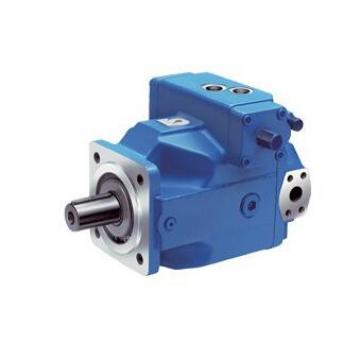 USA VICKERS Pump PVH131R13AF30B252000002001AB010A
USA VICKERS Pump PVH131R13AF30B252000002001AB010A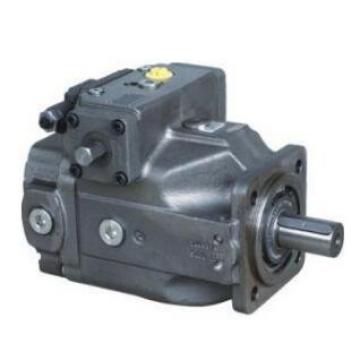 Parker Piston Pump 400481002108 PV140R1K1B4NWLZ+PGP517A0
Parker Piston Pump 400481002108 PV140R1K1B4NWLZ+PGP517A0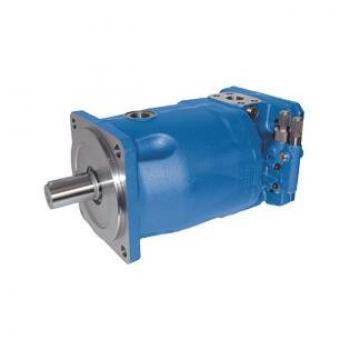 Parker Piston Pump 400481003286 PV180R1K1A4NYCD+PGP511A0
Parker Piston Pump 400481003286 PV180R1K1A4NYCD+PGP511A0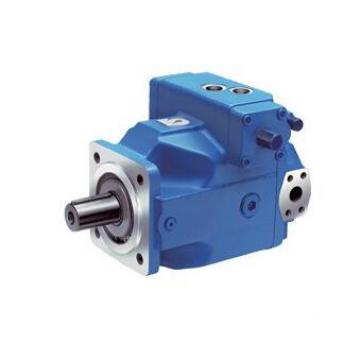 USA VICKERS Pump PVH057R02AA10B25200000100100010A
USA VICKERS Pump PVH057R02AA10B25200000100100010A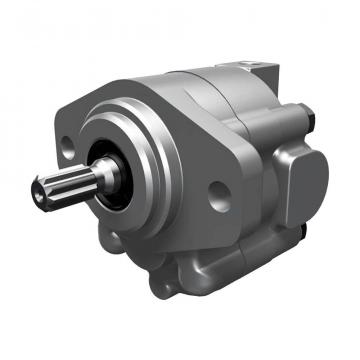 Parker Piston Pump 400481004166 PV270R9K1B4NYLZK0033+PVA
Parker Piston Pump 400481004166 PV270R9K1B4NYLZK0033+PVA